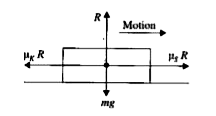When a hot body warms a cool one, are their temperature changes equal in magnitude?
To determine whether the temperature changes of a hot body and a cool body are equal in magnitude when they interact, we can use the principles of calorimetry. Here’s a step-by-step solution:
Step 1: Define the Variables
Let:
- m1 = mass of the hot body
- T1 = initial temperature of the hot body
- S1 = specific heat capacity of the hot body
- m2 = mass of the cool body
- T2 = initial temperature of the cool body
- S2 = specific heat capacity of the cool body
- T = final equilibrium temperature after heat exchange
Step 2: Apply the Law of Calorimetry
According to the law of calorimetry, the heat lost by the hot body is equal to the heat gained by the cool body. This can be expressed as:
Heat lost by hot body=Heat gained by cool body
Mathematically, this is represented as:
m1S1(T1−T)=m2S2(T−T2)
Step 3: Rearrange the Equation
Rearranging the equation gives us:
m1S1(T1−T)=m2S2(T−T2)
This can be rewritten as:
T1−TT−T2=m2S2m1S1
Step 4: Analyze Temperature Changes
Let:
- ΔT1=T1−T (temperature change of the hot body)
- ΔT2=T−T2 (temperature change of the cool body)
From the rearranged equation, we can express the relationship between the temperature changes:
ΔT1ΔT2=m2S2m1S1
Step 5: Conclusion on Magnitude of Temperature Changes
For the temperature changes ΔT1 and ΔT2 to be equal in magnitude, the ratio must equal 1:
m2S2m1S1=1
This means:
m2S2=m1S1
If m2S2≠m1S1, then the temperature changes will not be equal in magnitude.
Final Answer
No, when a hot body warms a cool one, their temperature changes are not necessarily equal in magnitude unless m2S2=m1S1.
---
Let:
- m1 = mass of the hot body
- T1 = initial temperature of the hot body
- S1 = specific heat capacity of the hot body
- m2 = mass of the cool body
- T2 = initial temperature of the cool body
- S2 = specific heat capacity of the cool body
- T = final equilibrium temperature after heat exchange
According to the law of calorimetry, the heat lost by the hot body is equal to the heat gained by the cool body. This can be expressed as:
Heat lost by hot body=Heat gained by cool body
Mathematically, this is represented as:
m1S1(T1−T)=m2S2(T−T2)
Rearranging the equation gives us:
m1S1(T1−T)=m2S2(T−T2)
This can be rewritten as:
T1−TT−T2=m2S2m1S1
Let:
- ΔT1=T1−T (temperature change of the hot body)
- ΔT2=T−T2 (temperature change of the cool body)
ΔT1ΔT2=m2S2m1S1
For the temperature changes ΔT1 and ΔT2 to be equal in magnitude, the ratio must equal 1:
m2S2m1S1=1
This means:
m2S2=m1S1
If m2S2≠m1S1, then the temperature changes will not be equal in magnitude.
No, when a hot body warms a cool one, their temperature changes are not necessarily equal in magnitude unless m2S2=m1S1.
Topper's Solved these Questions
- CALORIMETRYBook:CENGAGE PHYSICS ENGLISHChapter:CALORIMETRYExercise:Exercise 1.2
Explore 22 Videos
- CALORIMETRYBook:CENGAGE PHYSICS ENGLISHChapter:CALORIMETRYExercise:Exercise 1.3
Explore 18 Videos
- CALORIMETRYBook:CENGAGE PHYSICS ENGLISHChapter:CALORIMETRYExercise:Solved Example
Explore 13 Videos
- BASIC MATHEMATICSBook:CENGAGE PHYSICS ENGLISHChapter:BASIC MATHEMATICSExercise:Exercise 2.6
Explore 20 Videos
- CENTRE OF MASSBook:CENGAGE PHYSICS ENGLISHChapter:CENTRE OF MASSExercise:INTEGER_TYPE
Explore 1 Video
Similar Questions
Knowledge Check
For a body on a horizontal surface, coefficients of static and kinetic frictions are 0.4 and 0.2 respectively. When the body is in uniform motion on the surface, a horizontal force equal in magnitude to limiting friction is applied on it. The acceleration produced is
 A0.4gB0.1 gC0.2 gD0.6 g
A0.4gB0.1 gC0.2 gD0.6 g
A body cools in a surrounding of constant temperature 30∘C Its heat capacity is 2J/∘C. Initial temperature of cooling is valid. The body of mass 1 kg cools to 38∘C in 10 min
When the body temperature has reached 38∘C, it is heated again so that it reaches 40∘C in 10 min. The heat required from a heater by the body is
View SolutionAccording to Newton's law, rate of cooling is proportional to the difference between the temperature of the body and the temperature of the air. If the temperature of the air is 20∘C and body cools for 20 min from 100∘C to 60∘C then the time it will take for it temperature to drop to 30∘ is
View SolutionIf the system were lossing heat according to Newton's cooling law the temperature of the mixture would change with time according to (while heater was on) .
View SolutionIn ___________ (warm-blooded/cold-blooded) animals, the body temperature changes with the surrounding temperature.
View SolutionDerive Newton's law of cooling to show that the rate of loss of heat from the body is proportional to the temperature difference between the body and its surroundings.
View SolutionA hot body is placed in a closed room maintained at a lower temperature. Is the number of photons in the room increasing?
View SolutionThemperature of a body θ is slightly more than the temperature of the surrounding θ0 its rate of cooling (R) versus temperature of body (θ) is plotted its shape would be .
View Solution
